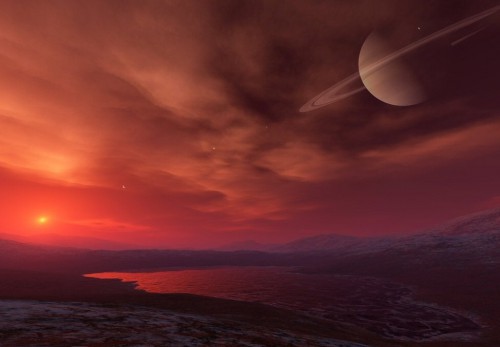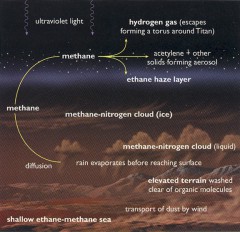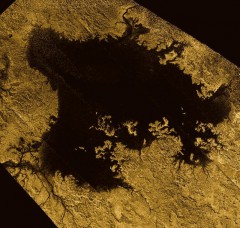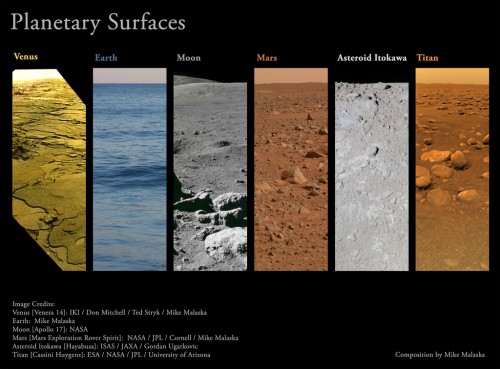
‘Day after day, day after day,
we stuck nor breath nor motion
As idle as a painted ship upon a painted ocean
Water, water everywhere and
all the boards did shrink
Water, water everywhere nor any drop to drink.’
— Samuel Taylor Coleridge, ‘The Rime of the Ancient Mariner’, 1798
It’s hard to imagine English poet Samuel Coleridge’s reaction if he was told during the writing of his famous poem that one of Saturn’s moons, Titan, had huge bodies of liquid on its surface like lakes and seas. But even though Coleridge’s fictitious mariners in reality wouldn’t be able to sail those Titanian seas or drink their waters, those seas nevertheless appear to share a common characteristic with the earthly ones in Coleridge’s poem: They are dead-calm and waveless. And planetary scientists have been wondering why.
Titan is one of the most Earth-like worlds in the Solar System—a planet-sized moon, replete with a thick, opaque atmosphere, a hydrologic cycle similar to Earth’s, seasons, clouds, small mountains, long rivers, sand dunes, rocks, lakes, and seas. Yet, at the same time, Titan is as alien as it is Earth-like. Its atmosphere is oxygen-free and mostly composed of nitrogen and methane, its sand dunes are made of nitrogen-rich organic compounds, its rocks are made of water ice as hard as granite, and its hydrologic cycle is based on methane. Hydrocarbons like methane and ethane are found in a gas state on Earth—better known as natural gas—but on Titan they are liquids due to the very low temperatures there. Indeed, with a surface temperature of -179 degrees Celsius, Titan could hardly be described as “home”. Even so, Titan is a prime example of the fact that the forces that form and shape planets are universal. And according to most scientists, Titan can be seen as an analogy of the primordial Earth before life arose, albeit in a much colder version.

One of the most exciting discoveries of the Cassini-Huygens mission was without doubt the existence of lakes and seas on Titan. Even though the possibility was hinted at during the Voyager fly-bys of the early 1980s, planetary scientists had to wait for the arrival of Cassini into orbit around Saturn in 2004 to have their first definitive evidence. The wonderful photographs taken by the Huygens probe during its descent and landing on Titan in 2005 and the subsequent radar mapping by Cassini have revealed a wet world. And as is the case with space exploration, exciting discoveries often raise more interesting questions. And one such question has to do with the apparent stillness of Titan’s seas.
Although Cassini has made 95 fly-bys of Titan to date, probing the moon with its Radar and Visible and Infrared Mapping Spectrometer (VIMS) instruments down to millimeter detail, it has detected no waves on the moon’s seas. Their surfaces appear to be completely smooth and mirror-like. And planetary scientists have been left with a perplexing puzzle to solve. One explanation that was proposed was the absence of any winds. But winds have been observed on Titan, caused in part by the tidal forces exerted by the massive, nearby Saturn. Those winds, alongside local methane rain, are responsible for the formation and constant reshaping of Titan’s sand dunes, which are vast formations that run for hundreds of kilometers across the moon’s equatorial regions. Furthermore, the winds’ effects are enhanced by the moon’s low gravity. Indeed, due to its smaller mass and density, Titan has a surface gravity one-seventh that of Earth, which is actually slightly smaller than the Earth’s Moon. At that low-gravity environment, winds would find very small resistance while blowing across the landscape, covering a wider range of distances.

Another explanation could be that wind speeds aren’t fast enough to stir up waves. But with a chemical composition of methane and ethane (elements which in liquefied state have a viscosity lower than water), the Titanian seas should stir up even with a very slight breeze. Indeed, calculations published in a 2010 study by Ralph D. Lorenz, a planetary scientist who has worked with ESA on the design of the Huygens probe, now working at the Johns Hopkins University Applied Physics Lab in Baltimore, Md., show that winds speeds of 1-2 meters per second would be adequate for waves to form.
Could this absence of waves mean that the seas on Titan are frozen? “That’s unlikely,” says Alex Hayes, assistant professor of Astronomy at Cornell University and participating scientist on the Cassini mission, “because we see evidence of rainfall and surface temperatures well above the melting point of methane.” A new study made by Hayes and his colleagues earlier this year supports Lorenz’s earlier one, showing that winds no faster than 2-3 kilometers per hour should be enough for the formation of waves. It may be that the seas on Titan are more like the asphalt pits seen on Earth, according to another hypothesis. That would make Titan’s seas very resistant to any motion caused by winds. “We can’t yet rule that out,” says Hayes.

The mystery of Titan’s waveless seas is an exciting one, not the least because its solution would shed light to the mechanisms of a truly alien environment. And this insight could help astronomers and planetary scientists to not only probe and understand weather patterns on distant extrasolar planets, but to better understand the processes that took place on the primordial Earth as well.
The only way to solve this mystery would be for us to go back and study Titan’s seas up-close. That was the objective of the Titan Mare Explorer, a low-cost Discovery-class mission proposal, that was under consideration from NASA but eventually wasn’t picked up by the space agency. Sadly, the chances for more missions to Titan in the foreseeable future don’t look good, either. Due to the current budgetary constraints in the U.S. federal government, even the continuation of the ongoing Cassini mission is in jeopardy. During an upcoming senior review due for January, NASA will have to decide which planetary missions to continue funding and which to decommission, with Cassini accompanying the Curiosity rover mission, amongst others, on the senior review list. In more of the same news, and because of ever-tightly squeezed budgets, NASA announced just days ago that it was terminating its Advanced Stirling Radioisotope Generator (ASRG) program, which aimed at producing more efficient and less power-hungry generators for missions to the outer Solar System that have to rely on radioisotopes for power. Although the U.S. has restarted production of Plutonium-238, supplies for robotic space exploration are expected to be rather limited and not ready until the end of the decade, which means that the chances for missions to the outer planets will be very few and far between. With disheartening news like these and with the current fiscal environment showing no indications of change, it becomes more and more possible that a whole generation could come to pass before humanity manages to set its sights again on Titan and the rest of the outer Solar System.
Want to keep up-to-date with all things space? Be sure to “Like” AmericaSpace on Facebook and follow us on Twitter: @AmericaSpace




Wonderful article, Leonidas. And so fitting that you chose The Rime of the Ancient Mariner as its backdrop. Thanks for this latest contribution.
Thank you Ben! To receive such positive feedback from an acclaimed writer such as you, is most rewarding.
And yes, when I was thinking about the article, this particular poem stuck in my head and wouldn’t let go. Art is science and science is art, and both are life-long passions, so I try to fuse them together whenever I can while writing.
Leonidas, your article belongs in the archives for future generations like so many of Ben’s. You have provided excellent details and analysis of Titan. The picture montage of planetary surfaces is a real gem and demonstrates mankind’s continuous search for exciting discoveries in the cosmos. The last paragraph is almost a “dagger in the heart” to all those planning new missions to further our understanding of our planetary neighborhood.
An excellent report!
Thank you so much Tom!
Indeed, the planet montage is one of the best, awesome photographs I have ever seen. I beleive it should be on display in every classroom across the world. It brings home the awesome, transcendental nature of our exploration of the Cosmos, and the fact that the natural forces and processes are common across the Universe. That realisation literaly brought a shiver across my spine!
Fascinating article…recently I watched the movie Europa Report and was surprised at the premise ….A PRIVATELY funded space craft looking for life goes past Mars all the way to Europa looking for bugs…The ship breaks down the crew dies but not before they find proof of life….After thinking about I do believe they have it right…This is the future of space exploration…..
Once private companies develop the means to finance these high risk high reward missions…I suspect that it will be a manned Private mission that lands on Titan first as well…Very soon in fact within 20 years…
I think a more realistic scenario for such a mission would be a public-private partnership. With today’s mindset, such a trip would seem far too risky, dangerous and unprofitable for a private entity to undertake alone. As for the timeframe of such a mission, I’d put it at least 50 years into the future.